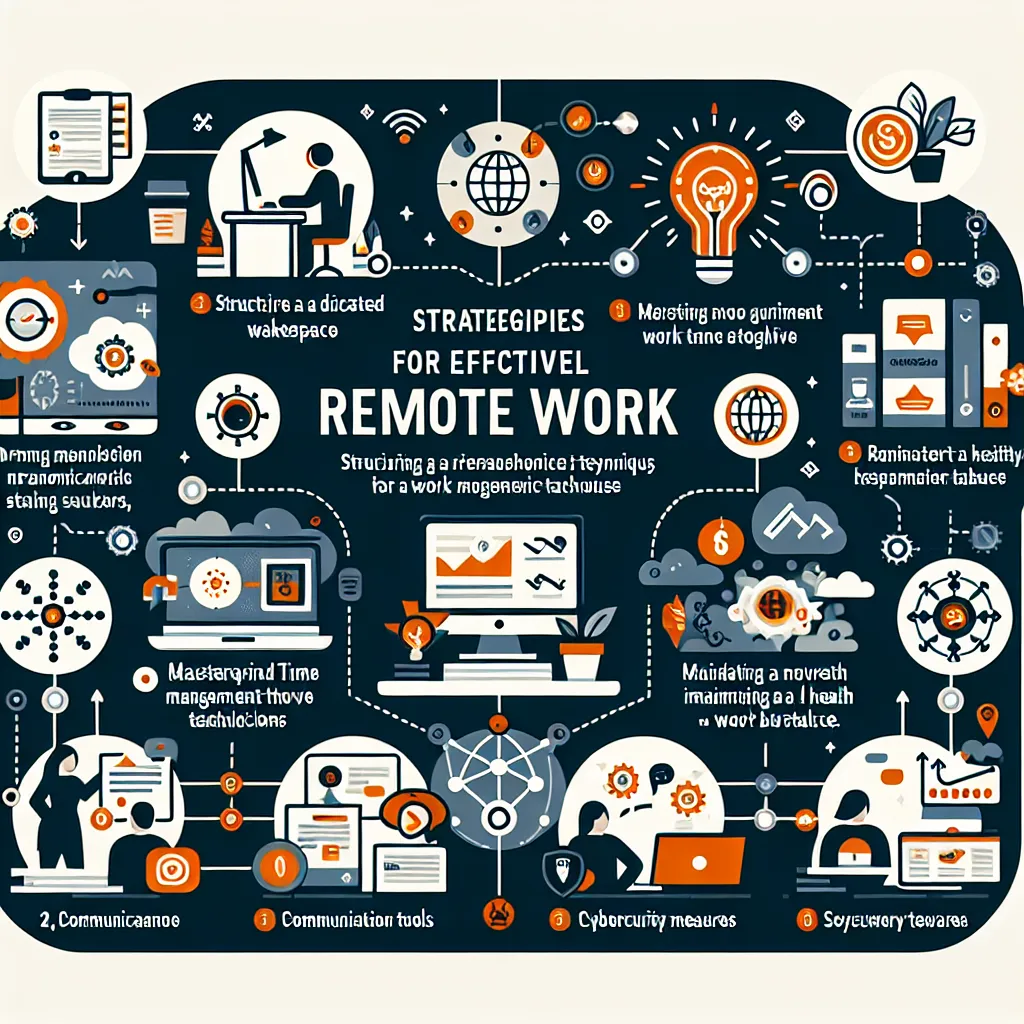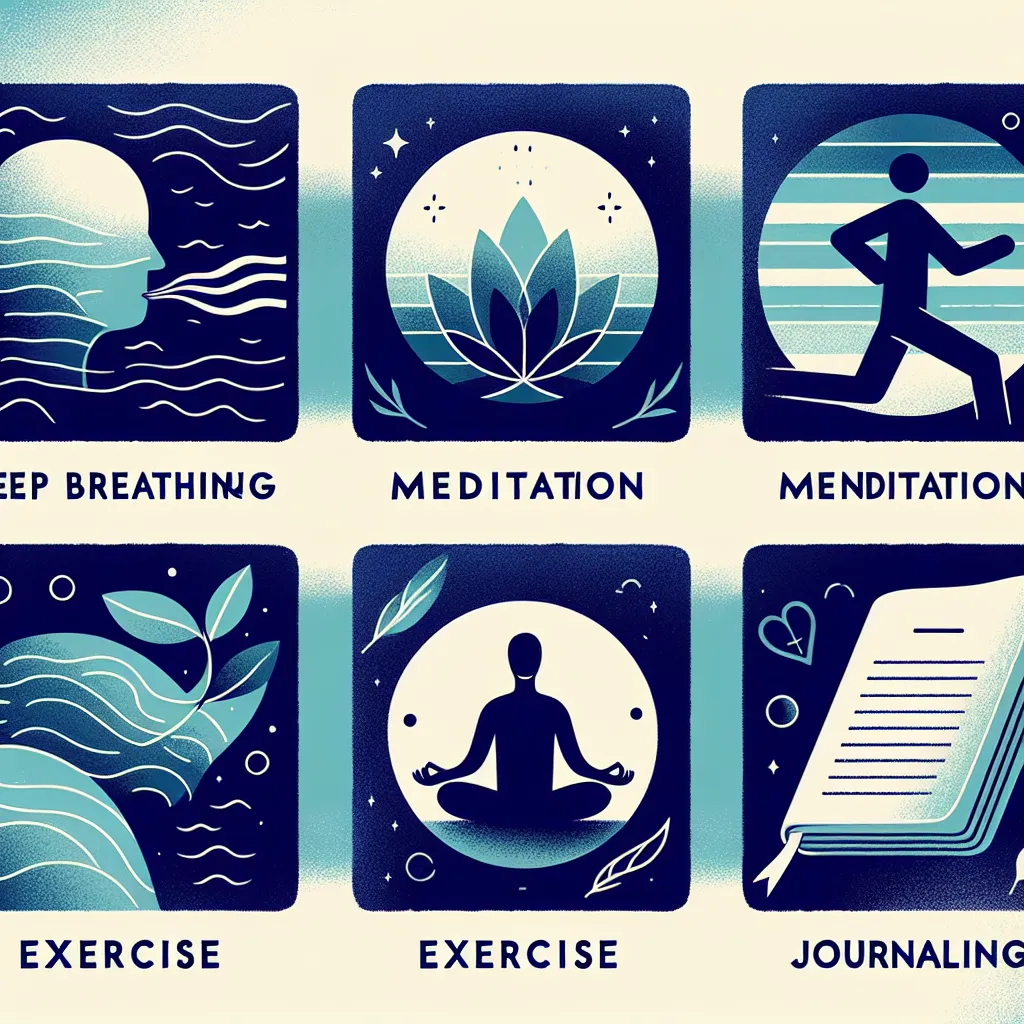The IELTS Reading test is a challenging component of the IELTS exam, requiring candidates to demonstrate their ability to understand complex texts and answer various types of questions. Today, we’ll focus on a topic that has gained significant relevance in recent years: “Top strategies for remote work.” This subject has become increasingly popular in IELTS exams, reflecting the global shift towards remote work arrangements. Based on recent trends and the topic’s continued relevance, it’s highly likely that you may encounter similar texts in future IELTS Reading tests.
Nội dung bài viết
- Reading Passage
- Remote Work: Strategies for Success in the Digital Age
- Questions
- True/False/Not Given
- Multiple Choice
- Matching Headings
- Summary Completion
- Answer Key and Explanations
- True/False/Not Given
- Multiple Choice
- Matching Headings
- Summary Completion
- Common Mistakes to Avoid
- Key Vocabulary
- Grammar Focus
- Tips for High Scores in IELTS Reading
Let’s dive into a practice reading passage and questions to help you prepare for this potential exam topic.
Reading Passage
Remote Work: Strategies for Success in the Digital Age
The COVID-19 pandemic has accelerated the adoption of remote work across industries, transforming the way we approach our professional lives. As organizations and employees adapt to this new normal, it’s crucial to implement effective strategies to ensure productivity, collaboration, and work-life balance in a virtual environment.
One of the primary challenges of remote work is maintaining clear communication. Without face-to-face interactions, misunderstandings can easily arise. To address this, successful remote teams prioritize regular check-ins and utilize a mix of synchronous and asynchronous communication tools. Video conferencing platforms like Zoom and Microsoft Teams facilitate real-time discussions, while project management tools such as Asana or Trello enable teams to track progress and share updates asynchronously.
Another key strategy for remote work success is establishing a dedicated workspace. This helps create a psychological boundary between work and personal life, which can be particularly challenging when working from home. Ideally, this space should be quiet, well-lit, and ergonomically set up to promote focus and prevent physical strain. Some companies even provide stipends to help employees create an optimal home office environment.
Time management takes on new importance in a remote setting. Without the structure of a traditional office, it’s easy for work hours to bleed into personal time. Successful remote workers often employ techniques like the Pomodoro method, which involves focused work intervals followed by short breaks. Additionally, clearly defining working hours and communicating them to colleagues can help maintain a healthy work-life balance.
Cybersecurity is another critical consideration for remote work. With sensitive company data being accessed from various locations, organizations must implement robust security measures. This often includes the use of virtual private networks (VPNs), multi-factor authentication, and regular security training for employees. Remote workers should be vigilant about potential phishing attempts and ensure their home networks are secure.
Despite the challenges, remote work offers numerous benefits, including increased flexibility and reduced commute times. To capitalize on these advantages, many companies are adopting hybrid models that combine remote and in-office work. This approach allows for the best of both worlds: the flexibility of remote work and the collaborative benefits of in-person interactions.
Professional development remains crucial in a remote work environment. Organizations are finding innovative ways to provide training and mentorship virtually, including online courses, virtual workshops, and digital mentoring programs. Employees should proactively seek out these opportunities to continue growing their skills and advancing their careers.
As remote work becomes a permanent fixture in the professional landscape, well-being initiatives have gained prominence. Companies are recognizing the importance of supporting their employees’ mental and physical health through virtual wellness programs, flexible working hours, and resources for managing stress and isolation.
In conclusion, successful remote work strategies encompass a range of factors, from effective communication and time management to cybersecurity and well-being initiatives. As both organizations and individuals continue to refine their approach to remote work, these strategies will evolve, shaping the future of work in the digital age.
 Top strategies for remote work
Top strategies for remote work
Questions
True/False/Not Given
Do the following statements agree with the information given in the reading passage? Write
TRUE if the statement agrees with the information
FALSE if the statement contradicts the information
NOT GIVEN if there is no information on this
- Remote work has become more prevalent due to the COVID-19 pandemic.
- Video conferencing is the only effective tool for communication in remote work settings.
- Companies always provide financial support for setting up home offices.
- The Pomodoro technique is a time management method used by some remote workers.
- All organizations implementing remote work use virtual private networks (VPNs).
Multiple Choice
Choose the correct letter, A, B, C, or D.
-
According to the passage, what is one of the main challenges of remote work?
A) Increased productivity
B) Clear communication
C) Reduced costs for companies
D) Improved work-life balance -
What does the text suggest about cybersecurity in remote work environments?
A) It is not a significant concern
B) Only large companies need to worry about it
C) It requires vigilance from both companies and employees
D) VPNs alone are sufficient to ensure security
Matching Headings
Match the following headings to the correct paragraphs in the passage. Write the correct number (i-x) next to questions 8-12.
i. The Rise of Hybrid Work Models
ii. Importance of a Dedicated Workspace
iii. Challenges in Remote Team Communication
iv. Cybersecurity Measures for Remote Work
v. Benefits of Remote Work Arrangements
vi. Time Management in a Virtual Environment
vii. Professional Growth in Remote Settings
viii. The Impact of COVID-19 on Work Practices
ix. Balancing Work and Personal Life
x. Supporting Employee Well-being Remotely
- Paragraph 2 ___
- Paragraph 3 ___
- Paragraph 4 ___
- Paragraph 5 ___
- Paragraph 8 ___
Summary Completion
Complete the summary below using words from the box. Write the correct letter (A-L) next to questions 13-16.
A) flexibility B) communication C) security D) workspace
E) training F) balance G) mentorship H) time
I) development J) well-being K) hybrid L) productivity
Remote work strategies focus on several key areas to ensure success. Effective (13) is crucial, utilizing both synchronous and asynchronous tools. Creating a dedicated (14) helps separate work from personal life. (15) management becomes more important without traditional office structures. Companies must also prioritize cyber (16) to protect sensitive data accessed from various locations.
Answer Key and Explanations
True/False/Not Given
- TRUE – The passage states, “The COVID-19 pandemic has accelerated the adoption of remote work across industries.”
- FALSE – The text mentions “a mix of synchronous and asynchronous communication tools,” not just video conferencing.
- NOT GIVEN – The passage states that “Some companies even provide stipends,” but it doesn’t say all companies do this.
- TRUE – The passage explicitly mentions “the Pomodoro method” as a time management technique used by remote workers.
- NOT GIVEN – While VPNs are mentioned as a security measure, the text doesn’t state that all organizations use them.
Multiple Choice
- B – The passage identifies clear communication as “one of the primary challenges of remote work.”
- C – The text emphasizes that both organizations and employees need to be vigilant about cybersecurity.
Matching Headings
- iii – This paragraph discusses challenges in communication for remote teams.
- ii – This paragraph focuses on the importance of having a dedicated workspace.
- vi – This paragraph discusses time management in a remote work setting.
- iv – This paragraph is about cybersecurity measures for remote work.
- x – This paragraph discusses supporting employee well-being in remote work environments.
Summary Completion
- B – The passage emphasizes the importance of effective communication in remote work.
- D – A dedicated workspace is mentioned as crucial for separating work and personal life.
- H – Time management is highlighted as taking on new importance in a remote setting.
- C – The passage discusses the importance of cybersecurity in protecting sensitive data.
Common Mistakes to Avoid
-
Overlooking details: In True/False/Not Given questions, pay close attention to specific details. For example, the difference between “some companies” and “all companies” is crucial.
-
Making assumptions: Avoid inferring information that isn’t explicitly stated in the text, especially for Not Given answers.
-
Misinterpreting multiple choice questions: Always refer back to the passage to verify your choice, rather than relying on general knowledge.
-
Rushing through matching exercises: Take time to understand the main idea of each paragraph before matching it with a heading.
-
Ignoring context in summary completion: Consider the overall meaning of the sentence and paragraph when selecting words to fill in the blanks.
Key Vocabulary
- Accelerated (verb): Sped up, hastened
- Synchronous (adjective): Happening at the same time
- Asynchronous (adjective): Not occurring at the same time
- Ergonomically (adverb): In a way that is designed for efficiency and comfort in the working environment
- Stipend (noun): A fixed amount of money paid regularly
- Pomodoro method (noun): A time management technique using timed intervals of work and breaks
- Virtual Private Network (VPN) (noun): A secure network connection that allows private access over a public network
- Phishing (noun): The fraudulent practice of sending emails purporting to be from reputable companies to induce individuals to reveal personal information
- Hybrid (adjective): Combining two different elements
- Proactively (adverb): Acting in anticipation of future problems, needs, or changes
Grammar Focus
Pay attention to the use of present perfect tense in the passage, such as “has accelerated” and “has gained.” This tense is used to describe actions that started in the past and continue to have relevance in the present. It’s particularly useful when discussing recent trends or changes.
Example: “The COVID-19 pandemic has accelerated the adoption of remote work across industries.”
Practice: Try creating your own sentences using the present perfect tense to describe other recent changes in work practices.
Tips for High Scores in IELTS Reading
-
Time management: Allocate your time wisely across all sections of the reading test.
-
Skim and scan: Quickly read through the passage to get a general idea, then scan for specific information when answering questions.
-
Read questions carefully: Understand exactly what each question is asking before searching for the answer.
-
Use context clues: If you encounter unfamiliar vocabulary, try to deduce the meaning from the surrounding context.
-
Practice regularly: Familiarize yourself with different question types and develop strategies for each.
-
Improve your vocabulary: Build your knowledge of academic and topic-specific words to enhance comprehension.
-
Stay calm: Don’t panic if you encounter a difficult passage or question. Move on and return to it later if time allows.
By following these strategies and practicing regularly with diverse reading materials, you can improve your performance in the IELTS Reading test. Remember, understanding the types of questions and developing effective time management skills are key to achieving a high score.
For more tips on improving your IELTS performance, check out our articles on top tools for online business and tips for remote team collaboration. These resources can provide additional context and vocabulary related to remote work, which may be beneficial for your IELTS preparation.


